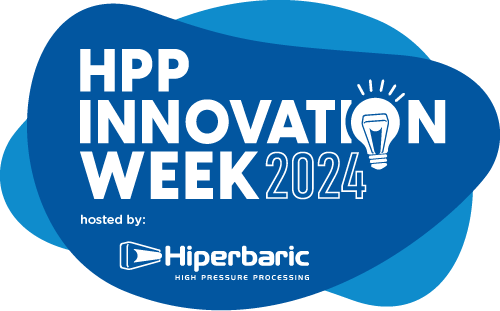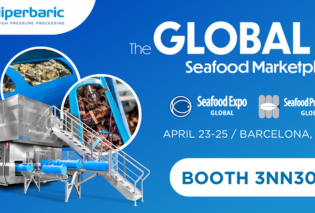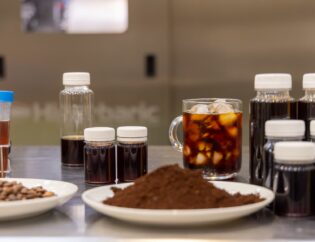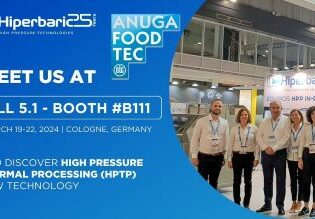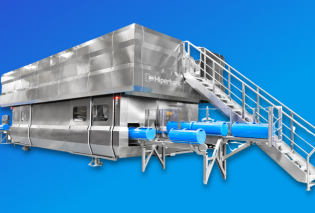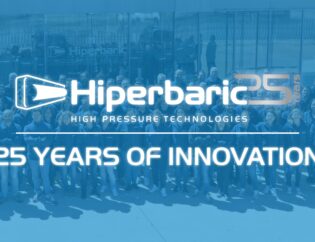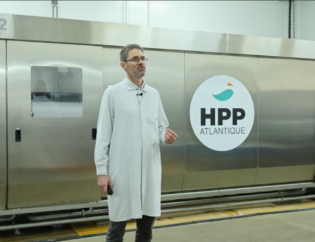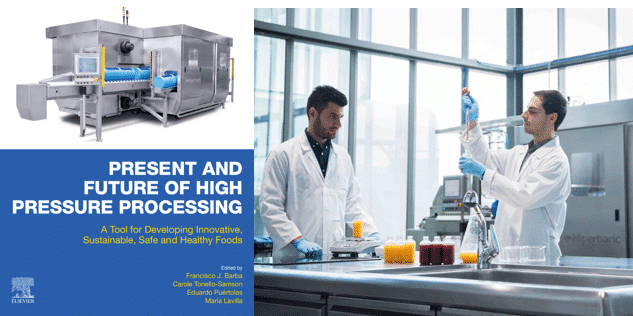

The chapters “Advances in high-pressure processing in-pack and in-bulk commercial equipment” and “An introduction to packaging for commercial high-pressure processing (HPP) applications” are included in the book “Present and future of High Pressure Processing” – written by Dr. Carole Tonello, Director of Commercial and Applications Departments at Hiperbaric, Dr. Rui Queirós, Dr. Vinicio Serment and the Phd student Mario González-Angulo, all members of the Applications Department at Hiperbaric and specialists in High Pressure Processing (HPP).
The first chaper is centered on the evolution of HPP equipment, highlighting technical aspects of the In-Bulk technology, exclusive of Hiperbaric. Whereas, the second one describes the packages used for HPP applications, and its new developments. In this article we will underline the most innovative aspects and technological advances made in this technology.
Hiperbaric, the World’s leading manufacturer of High Pressure Processing (HPP) equipment, actively participates in the scientific dissemination of in-pack and in-bulk technology.
Recently, some members of the Department of Applications at Hiperbaric wrote two chapters presented in the book “Present and future of High Pressure Processing”, edited by Dr. Carole Tonello, Director of Commercial and Applications Departments at Hiperbaric, alongside Dr. Francisco J. Barba, Dr. Eduardo Puértolas and Dr. María Lavilla and published by Elsevier.
The chapters in question are the ones entitled “Advances in high-pressure processing in-pack and in-bulk commercial equipment”, written by Dr. Carole Tonello, Dr. Rui Queirós and Mario González-Angulo, and “An introduction to packaging for commercial high-pressure processing (HPP) applications”, written by Dr. Carole Tonello and Dr. Vinicio Serment-Moreno, all specialists in the technology and part of the applications team at Hiperbaric.
Book content overview: new perspectives and applications
This book is an invitation to the potentialities of high pressure in-pack and in-bulk technology, since it explores many possible uses of high-pressure (HP), whilst clarifies the most basic concepts behind the technology. Throughout the sections and chapters of the book is possible to realize that this technology goes beyond a non-thermal preservation technique, having many other applications.
This technology can be used to assist the extraction of bioactive compounds that are usually enclosed in insoluble structures. HP causes damage in the membranes of this organelles, which allows the extraction of compounds to the medium, without the need of using organic solvents. Also, since, it is conducted at refrigerated or room temperature, the heat-sensitive compounds are not damaged. This technique has been recognized as an environment-friendly technology by the Food and Drug Administration – FDA.
Even though these applications are still at a research level, HP can also be used to change the structure and functionality of biopolymers, by inducing, for example, gelation of some polysaccharides that allow developing new ingredients with different textural properties. Furthermore, the changes in protein’s conformation promoted by pressure have also shown the potential to reduce the allergenicity of foods.
Finally, to guide the reader, the book is organized in different sections. It starts with an introductory part, followed by a section that focuses on the impact of HPP on bioactive compounds and bioaccessibility/bioavailability. In the third section is discussed the reduction of toxic/contaminants assisted by HPP, whereas section four centralizes in the opportunities of HPP in healthy and/or functional food development. Finally, the last section presents the challenges of HPP in innovative applications.
Advances in high-pressure processing In-pack equipment
The first In-Pack HPP machine was implemented in Japan in 1990. Ever since, HPP machines have been improved, increasing their volume capacity, with larger vessel volumes and automatized systems for loading and unloading the product.
One of the most important achievements was the shift from a vertical to a horizontal design, leading, to major improvements in the process productivity and product handling.
Through the years the developments done in HPP machines increased the industry acceptance and interest. The vessel capacity scaled from 215 litres in 1998 to 525 litres by 2004, as a consequence, the output of the HPP in-pack machines has greatly improved (Figure 1).
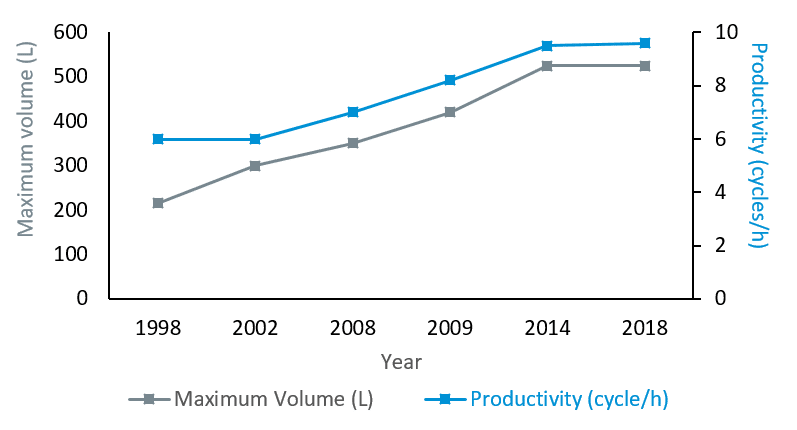
Additionally, big improvements were made in the reliability and maintainability of the HPP in-pack machines. The lifespan of early generations of high-pressure vessels was comprised between 30,000 and 100,000 cycles. Currently, this number increased to up to 200,000 or even more.
The evolution of the number of HPP in-pack machines in production has been increasing exponentially, at the end of 2019 there were over 520 HPP units installed in the world. Nowadays, the technology in-pack is used all over the world, being the biggest markets North America, Europe and Asia, where 47%, 24% and 18% of the total number of machines in production are installed, respectively.
The evolution from In-pack to In-Bulk
Hiperbaric works daily to bring new solutions to the market of HPP.
In order, to improve some of the limitations from the In-Pack technology:
- Post-packaging technology (which limits the type of packaging used) and
- Restricted vessel filling efficiency (40.55%), among others,
This company started to develop a better solution to process juices in-bulk, aiming to a filling efficiency of 90%: Hiperbaric’s In-Bulk machine (Figure 2).
It is able to process large volumes of beverages in a bag with a similar volume and size of the vessel, disrupting the In-Pack concept that has been around for 15 years.
The bag stands in place during a full production, withstanding over 100 HPP cycles and representing a production of about 50,000 litres. In addition, the material of the bag can be made of different plastics, including bioplastics.
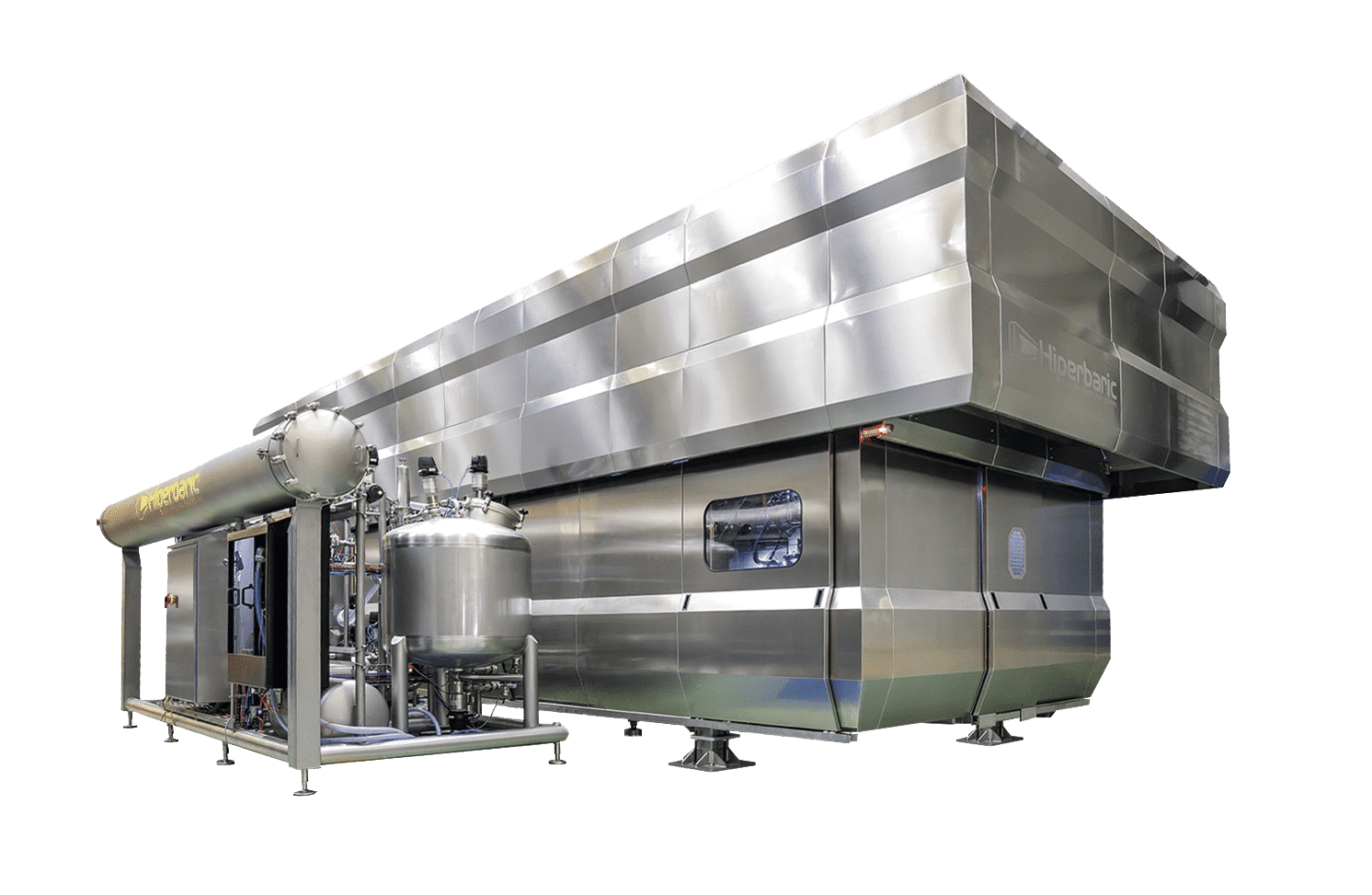
The first commercial Hiperbaric 525 Bulk unit was installed at Hermes Boissons in France, at the end of 2019. At the beginning of 2020, French company was successfully producing juice In-Bulk.
The machine design is based on one (Hiperbaric 525 Bulk) or two (Hiperbaric 1050 Bulk) vessels of 525 L equipped with a system of tanks (beverage inlet and outlet) located on a skid.
Its production mode is similar in many steps to the In-Pack technology, with some differences: there is no longer a loading and unloading line, there is a plastic bag inside the vessel to accommodate the liquids to be processed, and technical aspects, that among others, include the systems that guarantee the cleaning and disinfection between cycles.
Contact us if you want to know more about the added value that HPP technology can provide to your products in terms of quality and food safety.

